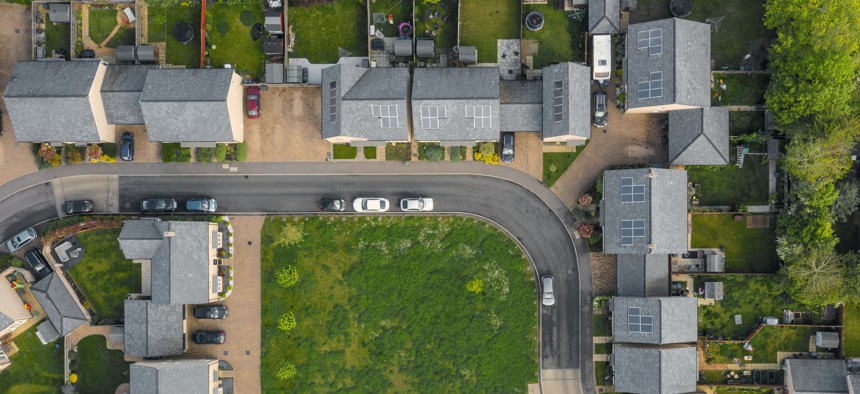When a Low-Income Neighborhood Rebound Doesn't Displace Residents

Justin Paget via GETTY IMAGES
Often when poverty rates drop, it means existing members of a community are pushed out. New research looks at unique factors in places where this wasn’t the case.
Lifting the economic fortunes of a struggling neighborhood while also ensuring existing residents aren’t forced out by wealthier newcomers can be a difficult balancing act.
But a new Brookings Institution report sheds light on places that have shown it is possible to avoid what’s often referred to as gentrification, as a neighborhood rebounds. The study highlights common factors in neighborhoods where poverty levels dropped by at least 10 percentage points over 15 years without residents getting displaced.
“We get a sense these neighborhoods are moving out of concentrated poverty and into …what we would call inclusive prosperity, meaning that there's space for many different people to come in and many people to remain,” said Rhett Morris, of Common Good Labs, who was a co-author of the report.
The analysis comes at a time when about one in 15 people in the U.S. live in neighborhoods with concentrated poverty.
Concentrated poverty here refers to census tracts where at least 30% of residents live in poverty. In the U.S., 20 million people live in these areas, including nearly one in five Black people and one in eight Hispanics or Latinos, according to figures in the report.
Between 2000 and 2015, 193 of these communities significantly reduced poverty levels without pushing out residents, the report says.
Morris, along with Common Good Labs’ Rohit Acharya, set out to learn what made these communities different from other low-income areas.
Eight Indicators
By analyzing data collected between 2000 and 2015, Acharya and Morris identified eight factors that were most common among those neighborhoods.
These include higher levels of: home ownership, housing density and self employment; lower residential vacancy rates; and the presence of community organizations.
The other three indicators have to do with the areas surrounding the neighborhoods in question. These factors include: positive economic growth, lower homicide rates and lower risks of displacement in the surrounding areas.
Communities exhibiting all three indicators in the surrounding areas and at least four internally were more likely to see decreased poverty rates while also retaining existing residents, according to the report.
Neighborhoods that had these indicators retained local residents at a rate higher than the national average while also gaining new residents. And while the populations increased in these places, the proportion of residents in the largest racial or ethnic groups—primarily Black and Hispanic or Latino people—remained the same.
Importance of a Tailored Approach
Between 2000 and 2015, these neighborhoods saw increases in household incomes and small business loans. Property values more than doubled.
Similar to how doctors use vital signs to inform health care decisions, the eight indicators are linked to better future outcomes for neighborhoods and can provide guidance to elected officials, Morris said, speaking during an online panel on Tuesday.
Acharya added that local and state leaders have a “tremendous opportunity” to bolster these indicators in struggling communities with funding from the American Rescue Plan Act, the pandemic relief law providing $350 billion in direct aid to states and localities.
It’s critical for leaders to be aware of the unique combination of challenges each neighborhood faces and to tailor their approaches to addressing those issues, Acharya said. By focusing on these unique circumstances, leaders can find opportunities, he noted.
“Neighborhoods in large cities may find it difficult to increase homeownership given the high cost of housing in high-density neighborhoods, but the higher density may make it easier to establish new community-building organizations,” he said.
These kinds of decisions should also be informed by data, Acharya added. With the development of machine learning and geospatial technology, there’ve been significant gains over the past decade in information about hundreds of neighborhood characteristics.
Decision-makers can use that data with knowledge from residents and local leaders to reduce poverty while retaining residents, he said.
Molly Bolan is the assistant editor for Route Fifty.
NEXT STORY: A Land Deal Benefiting a Billionaire’s Soccer Team Is Muscled Through Despite Objections






